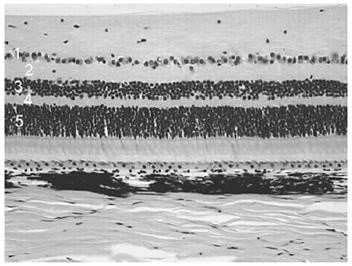Exam Details
Exam Code
:USMLE-STEP-1Exam Name
:United States Medical Licensing Step 1Certification
:USMLE CertificationsVendor
:USMLETotal Questions
:847 Q&AsLast Updated
:Apr 09, 2025
USMLE USMLE Certifications USMLE-STEP-1 Questions & Answers
-
Question 841:
A 4-month-old male infant is brought to the clinic because of excessive noisy respiration. On examination, the infant is within the normal range of growth, appears healthy, and does not show respiratory distress. Phonation is normal, along with head and neck examination findings. However, the child displays stridor (highpitched breathing sound) on inspiration, accentuated in the supine position. The parents report that the same stridor is heard during feeding or when the child is agitated. The attending physician places the child in the prone position and the stridor is relieved. To confirm, she holds the child in a neck extended position, which also relieves the stridor. An endoscopic laryngeal examination reveals bulky arytenoids cartilages and the diagnosis of laryngomalacia is established. During development, the arytenoids cartilages arise from which of the following?
A. first pharyngeal arch
B. second pharyngeal arch
C. third pharyngeal arch
D. fifth pharyngeal arch
E. sixth pharyngeal arch
-
Question 842:
A newborn infant suffers from cyanotic heart disease caused by transposition of the great arteries (TGA). In this situation, the aorta arises from which of the following structures?
A. ductus arteriosus
B. left atrium
C. left ventricle
D. right atrium
E. right ventricle
-
Question 843:
The structure indicated by arrow 1 in Fig. 1-2 is which of the following vessels?
A. brachiocephalic artery
B. left brachiocephalic vein
C. left common carotid artery
D. right brachiocephalic vein
E. superior vena cava
-
Question 844:
Retinitis pigmentosa is a hereditary disorder, which affects the photoreceptors (the rods and the cones) in the retina. These photoreceptors are located in which of the numbered layers in Figure below

A. 1
B. 2
C. 3
D. 4
E. 5
-
Question 845:
A 10-year boy is examined because his parents noticed that "his eyes never seem to look in the right direction." On examination, the left eye of the child is unable to move laterally (abduction) and when asked to look toward the nose (adduction), the eyeball retracts into the socket and the eye opening narrows. Sometimes, the eye also moves superiorly. The child is diagnosed with Duane syndrome, a congenital ocular motility disorder characterized by limited abduction of the affected eye. This is due to absence of the abducens (fifth cranial) nerve with aberrant innervation by the oculomotor (third cranial) nerve. Which of the following muscles is normally innervated by the abducens nerve?
A. inferior oblique
B. lateral rectus
C. medial rectus
D. superior oblique
E. superior rectus
-
Question 846:
A 2-year-old male patient develops progressive generalized weakness and muscle atrophy. The impairment first began with the muscles of the hips, and then progressed to the pelvic area, thigh, and shoulder muscles. The patient is diagnosed with Duchenne's muscular dystrophy, a congenital disorder where the protein dystrophin is deficient. Which of the following describes the role of dystrophin in muscle tissue?
A. anchors actin to the sarcolemma
B. endows the myosin filaments with elastic recoil properties
C. extends from Z disk to Zdisk, forming a supportive network
D. inhibits the binding of myosin to actin
E. protects desmin filaments from stressinduced damage
-
Question 847:
The third week of development is characterized by the appearance of the branchial apparatus, the embryonic primordium from which head and neck structures will be derived. The apparatus consists of five branchial arches, numbered 1, 2, 3, 4 and 6. Second arch anomalies represent 95% of all branchial anomalies and are classified into four types with types IIII being the most common. The anomalies manifest as cysts or fistulae in the lateral neck, located anterior and deep to the sternocleidomastoid muscle. Which of the following structures develop from the second branchial arch?
A. anterior digastric muscle
B. posterior cricoarytenoideus muscle
C. posterior digastric muscle
D. stylopharyngeus muscle
E. superior constrictor muscle
Tips on How to Prepare for the Exams
Nowadays, the certification exams become more and more important and required by more and more enterprises when applying for a job. But how to prepare for the exam effectively? How to prepare for the exam in a short time with less efforts? How to get a ideal result and how to find the most reliable resources? Here on Vcedump.com, you will find all the answers. Vcedump.com provide not only USMLE exam questions, answers and explanations but also complete assistance on your exam preparation and certification application. If you are confused on your USMLE-STEP-1 exam preparations and USMLE certification application, do not hesitate to visit our Vcedump.com to find your solutions here.